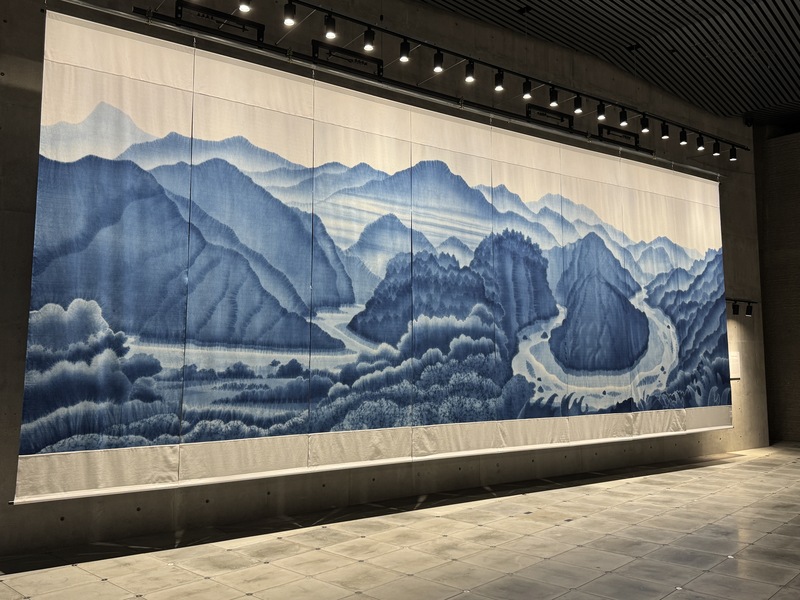TAIPEI (Taiwan News) — Taiwanese fiber artist Chen Ching-lin (陳景林) unveiled a large-scale textile painting at the We Taiwan cultural exhibition in Osaka on Saturday, reimagining Taiwan’s longest river as a symbol of natural and cultural heritage.
Spanning 920 by 294 centimeters, the artwork depicts the Zhuoshui River rendered in deep blue hues through the ancient practice of natural indigo dyeing. With its sweeping curves and layered topography, the piece captures both the beauty of Taiwan’s landscapes and Chen’s personal connection to the river, according to CNA.
Chen was born in Shuili Township, Nantou County, just a few hundred meters from the river. He described the Zhuoshui as a lifeline that shaped his childhood and the region’s agricultural identity.
Often referred to as Taiwan’s “mother river,” the Zhuoshu’s sediment-rich waters have nourished the fertile Changhua-Yunlin plain, one of the most productive agricultural regions in the country, according to the Water Quality Protection Web.
Over 60 days, Chen and his team worked 14-hour shifts, dedicating more than 1,000 hours to complete the piece. The textile was repeatedly soaked in vats of natural indigo, allowing the pigment to fully saturate the fibers and making the imagery visible from both sides of the fabric.
Chen’s artistic practice is a decades-long collaboration with his wife, Ma Yu-hsiu (馬毓秀). Together, they have spent over 40 years researching natural dyes extracted from hundreds of plants.
Their work has produced a full spectrum of color, from red and orange to indigo and gray, without the use of synthetic chemicals. While chemical dyes remain dominant in the textile industry due to their convenience, Chen emphasized the environmental toll, particularly the pollution of land, rivers, and oceans.
The river tapestry is part of the We Taiwan showcase at Expo 2025, which highlights four core themes: culture, arts, sustainability, and technological innovation.


AloJapan.com